Posts tagged 'java'
Social Roller
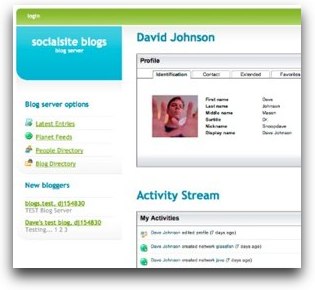
We demonstrated the Project SocialSite widgets in Roller at JavaOne, but we didn't show much other than just the basic widgets. We modified a Roller front-page theme to include a people directory, added a profile page for each user and slapped the widgets on the page. It was pretty rough, as you can see on the right, like our other SocialSite demo vehicles.
This week, I'm working to put together a much better demonstration, something useful enough to deploy to our internal blog site at Sun. Since I have limited time and I really need to get back to working on the SocialSite widgets and web services, I've been thinking about minimum set of features needed to add some value. Here's what I think we need:
- Landing page: shows activities of your friends and groups, your inbox of social requests and place for you to update your status. This could be added to Roller's Main Menu page or to pages of the Front Page blog, which is my preferred option.
- Personal profile page: shows your mugshot and the subset of your profile information that the viewer is allowed to see. Shows your activities and the OpenSocial gadgets you have installed. This could be done in the pages of each user's blog, which would give folks complete control of profile layout via page templates. Or I could be done in the pages of the Front Page blog.
- Activity per entry or comment: whenever you publish a weblog post, or comment on one, an entry will be added to your activity feed so that your friends can see what you're doing. This will be implemented as a feature of a Roller-specific OpenSocial Gadget.
- Protected entries: ability to publish blog entries that are visible only to your friends via the Roller Gadget.
Most of the above items should be pretty easy with the SocialSite widgets, but I'm sure I'll run into a snag or two at least. I always do. I'll post again next week and let you know how far I got.
Dave Johnson in Social Software
03:51PM Aug 25, 2008
Comments [3]
Tags:
apacheroller
java
socialsite
RESTful JSF in the works?
JSF spec lead Ed Burns just pointed out that some of my Sun-internal comments about JSF have made it outside the firewall and into an issue on the JSF specification project:
On Wed, 19 Mar 2008, David M Johnson said:
I think the goal should be to make JSF applications RESTful by default, with proper use of GET and POST, i.e. only use POST when application data is changing, not for component state. Another goal should be clean, book-markable URLs that only carry path-info and parameters needed by the application logic.
That's easy and the default situation with Rails, Grails, Struts, etc. How hard would it be to redesign JSF along those lines? Would it require EJB2 -> EJB3 level changes to JSF?
I suspect work on JSF 2.0 is too far along for this kind of change now, but it's nice to hear that the idea of a truly RESTful JSF is at least under consideration.
Dave Johnson in Java
11:52AM Aug 08, 2008
Comments [0]
Tags:
java
jsf
rest
Latest Links
- InfoWorld 2008-07-07 Lab test: Climb aboard Ruby on Rails
Interesting that the best rated Ruby-on-Rails IDE is the one that is free & opensource. Go Netbeans! - ongoin · Atomic Monday
"Herewith some evidence, for the general tech public, that Atompub is a big deal" - InfoQ: AtomServer â The Power of Publishing for Data Distribution
"a distributed, publish-subscribe service is a great way to address resiliency and loose coupling of subsystems" - blog.reddit -- what's new on reddit: reddit goes open source
"Until now, the only portion of reddit that wasn't freely available is reddit itself" - OAuth for Google Data APIs
"we're proud to announce that all of the Google Data APIs support OAuth" - Google Code Blog: Protocol Buffers released as Open Source
"think XML, but smaller, faster, and simpler" - Daily Kos: Cars After The Age of Oil
"We can switch to a new tech that is older and simpler than the Internal Combustion Engine - the electric horseless carriage was first created in 1830" - Wired.com: Laugh at High Gas Prices With a 282-MPG VW
"VW has approved a plan to build a limited number of One-Liters in 2010" - SAS Solar Farm | New Raleigh, NC
"Our local 500 pound software gorilla is building a five acre, one megawatt photovoltaic solar farm"
Dave Johnson in Links
10:00AM Jul 08, 2008
Comments [0]
Tags:
energy
google
java
netbeans
oauth
LinkedIn: 99% Pure Java
Nick Lothian tweeted about this JavaOne presentation on LinkedIn because it mentions the ROME RSS/Atom feed parser. I'm really sorry I missed it at JavaOne. What's particularly interesting to me are the diagrams that explain how the LinkedIn architecture has evolved to scale up to 22 million users. Here's an example:
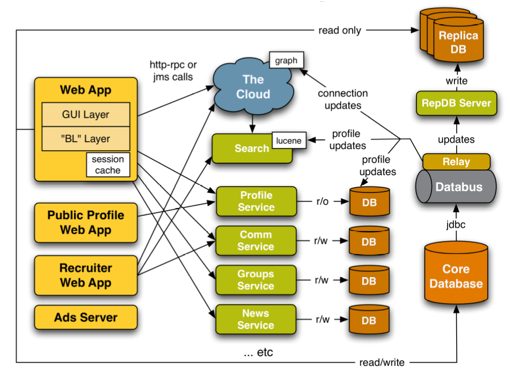
Dave Johnson in Social Software
05:07AM Jun 05, 2008
Comments [1]
Tags:
java
rome
socialnetworking
Struts 2 in Action
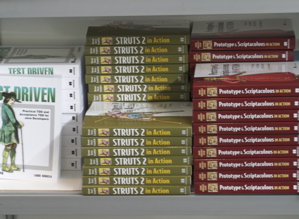
Struts 2 is my favorite Java web framework these days; it's REST-friendly, simple, easy to use, very flexible and the only thing it has with its creaky old Struts 1.x parent is the fact that it's an action framework rather than a component framework like JSF. As most of my readers probably already know, Struts 2 is based on WebWork/XWork the framework that powers JIRA and Confluence, two of the coolest Java webapps around.
Apparently, I'm not alone in this thinking -- I keep on running into folks at JavaOne who feel the same way. But unfortunately, Struts 2 docs are lacking, so I was very happy to see two new books on Struts 2 at the JavaOne bookstore. There's Struts 2 in Action, a rewrite of the classic Manning book, and Practical Apache Struts 2 Web 2.0 Projects from Apress.
I picked up a copy of Struts 2 in Action on Monday and it looks great so far, but I've only skimmed it. I'll let you know what I think once I dig-in on the flight home.
If you're at JavaOne, check out TS-5739 - Hands-on Struts2 by Ian Roughley (author of the Apress book) today at 10:50 AM in Esplanade 307/310.
Dave Johnson in Java
08:19AM May 07, 2008
Comments [0]
Tags:
java
javaone
struts2
Social Software at JavaOne 2008
Dave Johnson in Java
11:00AM Apr 29, 2008
Comments [0]
Tags:
communityone
communityone2008
java
javaone
javaone2008
Latest Links: open source, social networking and etc.
- cgwalters - A software tsunami
"OpenJDK is finally changing that. Now, you can write a library using Java, it can be sensibly integrated with Free operating systems" - Countdown for IBM Project Zero | Reg Developer
"bringing the feedback typical of an open source project without any of the obligations to give the resulting technology back to the community." - Soviet-era JCP needs change, concedes top commissar | Reg Developer
Patrick Curran has reached a firm conclusion on his organization: "We have to change," he said. "No more smoke-filled rooms." - Glynn Foster: Why Our Governance Doesnât Work
"Thereâs no substitute to JFDI - or improving our governance model so that it doesnât get in the way of suitably motivated people who want to contribute." - Skype Journal: Skype and the Social Network Stack
"We need a new stack to sort out social media's plumbing" - An Open Letter to American Express ~ Chris Pirillo
"You know, for all the buzz that FaceBook gets⦠I get far more value out of Twitter." - buddypress - Google Code
"suite of plugins that will completely transform a vanilla installation of Wordpress MU into a fully functional social network platform" - App Platform Strategies Blog: Looking for SOA success stories
"SOA is not working in most organizations" - OLPC News: Negroponte Says XP on XO in 60 Days
"the end of a dream". - Atlassian Dev Blog - Maven in our development process. Part 4.
"Maven users need training."
Dave Johnson in Links
10:00AM Mar 23, 2008
Comments [0]
Tags:
java
maven
opensource
socialnetworking
HOWTO: Configure caching in Apache Roller
Dave Johnson in General
07:15AM Mar 03, 2008
Comments [6]
Tags:
apacheroller
blogging
caching
java
memcached
Latest Links: JSF vs. REST
I've been very happy with the choice of Struts 2 for Roller, but I still follow JSF because it's the Java standard. A couple of articles by Ryan Lubke about what's coming in JSF 2.0 got me thinking about JSF again.
- Ryan Lubke's Blog: JSF 2.0 New Feature Preview Series, pt. 2.1: Resources
"Previous versions of JSF had no facility for serving resources" - Ryan Lubke's Blog: JSF 2.0 New Feature Preview, pt. 1: ProjectStage
"the JSF 2.0 EG has given a nod to Ruby on Rails' RAILS_ENV functionality"
One of my problems with JSF is REST. REST fans say JSF is inherently RESTless because every JSF request is a POST. JSF advocates say JSF can do GET and bookmarkable URLs if necessary and that's good enough.
- Bill de hora on JSF and REST
"JSF is clearly not focused on or suitable for working in the REST style to the extent REST principles seem to be actively excluded from the design." - Gavin King on JSF and REST
"On these community sites that claim you can't build restful application with JSF. I mean it is total nonsense. It is not even remotely true." - Gavin's JSF bookmarkable URL example
In the comments thread of an anti-JSF story at The Server Side.
Fortunately, the plans for JSF 2.0 indicate that REST improvements are coming:
- Java.Net TWik: JSF 2.0 Requirements Scratchpad
Mentions REST API (JSR-311) and navigation without using POST - JSR-314: JavaServer Faces 2.0
"Allow JSF application resources to be accessed via REST" and "Add support for REST (JSR 311)"
Unfortunately, it sounds like all they're planning to do is make it easier to create bookmarkable URLs and add some support for the JSF-311 REST API. Why can't the goal be to make JSF applications RESTful by default? Why can't JSF ensure that POST is only used when required by the application (not the framework) and JSF URLs are simple, clean and always bookmarkable.
Dave Johnson in Links
08:27AM Feb 18, 2008
Comments [2]
Tags:
java
jsf
rest
Latest Links: Feb. 16, 2008
- More on MySpaceâs Open Development Platform - GigaOM
"made up of three APIs â primarily Open Social and extensions weâve added" - ZDNet.com: Progress report on the OpenSocial Web
Summary of latest OpenSocial news and hackathons from Dan Farber - Facebook to Punish Stupid Applications, Reward Good Ones - ReadWriteWeb
"Metered messaging based on user engagement could save the Facebook Platform from a growing sense of app fatigue" - Roumen's Weblog: Android plug-in for NetBeans
"the screenshots look promising" - Rob Williams' Blog: finally ditched LifeRay
"we have finally ditched Liferay in favor of JBoss Portal. So far so good. It is much more stable. The code base is not a rat's nest of untested Struts goop." - Indoor WiFi Signal Booster by Meraki
"Meraki Mini is a small, easy-to-use wireless mesh repeater."
Dave Johnson in Links
07:48AM Feb 16, 2008
Comments [0]
Tags:
facebook
java
liferay
opensocial
socialnetworking
Yahoo Weather RSS module for ROME
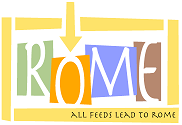
Apparently, I spoke to soon about ROME being in maintenance mode. There's an all-new Yahoo Weather module for ROME from Robert "kerbernet" Cooper.
Dave Johnson in Java
10:40AM Jan 23, 2008
Comments [0]
Tags:
feeds
java
rome
rss
ROME vs. Abdera

For Java developers starting out with RSS and Atom, here are some notes to help you figure out the differences between the Java.net ROME and Apache Abdera (incubating) projects.
ROME is a set of Java tools for parsing, fetching and generating all forms of RSS and Atom feeds. The core ROME library is relatively small and depends only on the somewhat creaky old JDOM XML parser. Available separately are modules to support various feed extensions such as OpenSearch, iTunes, GeoRSS, etc. ROME was originally developed and open sourced by Sun Portal dev team members in 2004.
ROME Propono is a subproject of ROME that supports publishing/editing entries and files to blog servers and AtomPub servers. Propono is made up of three parts: 1) a Blog Client library can publish via either the old lagacy MetaWeblog API or the shiny new AtomPub protocol, 2) an AtomPub client that publishes only via AtomPub and 3) a framework for creating AtomPub servers. Propono was developed by Ramesh Mandava and Dave Johnson, based on code from RSS and Atom in Action and open sourced as part of the Sun Web Developer Pack in 2007.
Abdera is a set of Java tools for working with Atom feeds and AtomPub protocol. This includes a parser, writers, an AtomPub client and a framework for creating AtomPub servers. Abdera's Atom feed parser uses STAX, so it uses less memory and is faster than ROME. Abdera's Atom feed support is more comprehensive than ROME's and it supports signatures, encryption, Atom to JSON, extensions for Threading, Paging, GeoRSS, OpenSearch, GoogleLogin, etc. etc. Abdera was developed by IBM and contribued to Apache in 2006.
Now let's compare frameworks. The pros and cons of ROME are:
- Pro: complete RSS support, all of the dozen various flavors
- Pro: it's generally simple and small, depending only one jar (JDOM)
- Pro: easy to understand and use the AtomPub server framework
- Pro: MetaWeblog API support
- Con: Atom feed support not as comprehensive as Abdera
- Con: parser uses lots of memory, slower, JDOM based
- Con: community not as active, seems to be in maintenance mode (See also Ohloh stats)
The pros and cons of Abdera are:
- Pro: comprehensive Atom feed support, lots more Atom extensions
- Pro: faster more efficient parser
- Pro: In the Apache Incubator with active and growing community (See also Ohloh stats)
- Con: lots of dependencies
- Con: AtomPub server framework poorly documented, overly complex (rewrite coming soon)
- Con: no RSS support (there is something in Abdera contrib, but it's incomplete).
There you have it. ROME and Abdera folks: think that's a fair comparison? Are you a ROME or Abdera user? How would you like to see these frameworks move forward?
Dave Johnson in Java
01:18PM Jan 22, 2008
Comments [7]
Tags:
abdera
apache
atom
feeds
java
rome
rss
Holiday project: JMaki for Roller
 Over the holidays I avoided doing anything directly related to my current set of work tasks. Sun went quiet, which helped, and I ignored the messages that piled-up in the Roller user and dev lists. It was so quiet that I had time for a fun little project: a JMaki plugin for Roller.
Over the holidays I avoided doing anything directly related to my current set of work tasks. Sun went quiet, which helped, and I ignored the messages that piled-up in the Roller user and dev lists. It was so quiet that I had time for a fun little project: a JMaki plugin for Roller.
JMaki makes it easy to use JavaScript widgets (Dojo, Google, YUI, etc.) from PHP, JSP, JSF and now Roller. To use a widget, all you have to do is call a method or include a tag and JMaki takes care of including the right JavaScript files and generating the right HTML for you. That's not all JMaki does, there's also a pub/sub facility to make it easy to wire widgets together via events, there's a proxy for fetching remote resources common table and tree data models. The theme is cool widgets with ease-of-development and that's what I'd like to see in Roller. You can read more about the JMaki value proposition on the Why Use JMaki page.
Here's an example. Below is a Roller page template that uses two JavaScript widgest, the Dojo Clock and the YUI Data Table. All it takes is a single line of template code to include each widget, and one widget is dynamic i.e. the table is populated via an RSS feed.
<html>
<head><title>JMaki test page</title></head>
<body>
<h1>JMaki test: dojo.clock</h1>
$jmaki.addWidget("dojo.clock")
<h1>JMaki test: yahoo.dataTable</h1>
$jmaki.addWidget("yahoo.dataTable", "/roller/xhp?id=rss","","")
</body>
</html>
And here's what that page looks like when displayed by Roller:

I'll write more about the plugin once I install it on this site. If you want some details about how the plugin was developed, you can read the email that I sent to the JMaki dev list: JMaki for Roller issues and suggestions. It links to the Java source code for the plugin.
Dave Johnson in Java
08:12AM Jan 02, 2008
Comments [0]
Tags:
java
javascript
jmaki
roller
Roller 4.0 released
Dave Johnson in Roller
08:16AM Dec 05, 2007
Comments [4]
Tags:
blogging
java
roller
OpenQabal: a social software platform w/Roller
I'm always happy to see Roller used in new sites, projects and products. Here's an interesting new example that I've been meaning to blog for a while now. Phillip Rhodes is working on building what he calls OpenQabal a "social software operating system." The project integrates a set of social software applications, including Roller and JavaBB, via Single Sign-On (SSO), a common look-and-feel and Semantically-Interlinked Online Communities (SIOC). He explains it all in an lengthy and informative blog post on the project's JRoller.com blog.
I'd never heard of SIOC before. Here's the executive summary:
Semantically-Interlinked Online Communities SIOC or is a framework aimed at connecting online community sites and internet-based discussions. Currently, online communities (boards, blogs, etc.) are like islands - they contain valuable information but are not well connected. SIOC allows us to interlink these sites, and enables the extraction of richer information from various discussion services.
Sounds like it could be pretty darn useful. But then again, I spent a little time exploring the list of SIOC enabled sites with the SIOC Firefox plugin and didn't really find any examples of interlinked communities or conversations. Am I missing something?
Dave Johnson in Open Source
08:56AM Dec 04, 2007
Comments [3]
Tags:
java
opensource
roller
socialsoftware
Sun open source project governance
Here's a sampling of governance docs from some of Sun's many open source projects. I've listed them in order of what I feel to be, the most progressive (i.e. community governance) to least progressive (i.e. corporate control). I've also listed a key quote from each doc and made a brief comment about each.
- OpenSolaris governance: "The OpenSolaris Community has the authority and responsibility for all decisions" - seems to approach ASF style governance.
- OpenJDK interim governance: "The [board] shall be comprised of [5 and ] shall conduct its affairs in accordance with democratic principles and shall represent the interests of the Community. Two [members] shall be employees of Sun" - not final, but looking good.
- Netbeans governance: "In the case of an irresolvable dispute, there is a governance board of three people, who are appointed for six month terms." (2 appointed by community, 1 by Sun)." - sounds pretty good, but the doc seems a little vague.
- SunGrid governance: "The Board positions include the Community Leader, the Community Site Manager, and four general members, two Sun members and from the independent developer Community." - sounds good, again doc seems a little vague.
- Glassfish governance: "The GlassFish project has an overall Project Lead ... appointed by Sun" - Sun has final say.
- OpenSSO governance (draft): "Project Managers make the final decision ... are appointed by Sun" - Sun has final say.
- OpenDS governance: The OpenDS project has single, overall Project Lead [who is] appointed by Sun Microsystems." - Sun has final say.
- Mobile and embedded: "Sun may change its appointed Governance Board members at any time" - Sun has final say.
Looks to me like the trend is towards community governance and the most important projects are the ones getting the most attention and the most progressive governance. That's good and I sincerely hope the trend continues.
Dave Johnson in Sun
08:57AM Dec 01, 2007
Comments [3]
Tags:
java
opensource
sun
Apache Shindig voting in progress and more OpenSocial details emerge
I wrote about Shindig before, it's a new open source project to implement the Google OpenSocial APIs. Well, now the official voting to accept the Shindig project into the Apache Incubator is in progress and some interesting details have emerged in the latest version of the proposal. First, as you can see by the initial list of committers in the proposal Google has joined the Shindig effort in force. Second, the proposal says that Shindig will be the reference implementation of the OpenSocial APIs. And third, Shindig will not only include the client-side JavaScript container but also a Java back-end. Brian McAllister has already made some "gnarly" initial client-side container code available, I can't wait to see the Google contribution.
Dave Johnson in Open Source
07:48AM Nov 30, 2007
Comments [0]
Tags:
asf
java
ning
opensocial
Groovy support back in Netbeans
After going missing in NB 5.5, Groovy support is back in Netbeans. Basic Groovy support with syntax coloring and support for running scripts from the IDE is available in plugin form (download page) for Netbeans 6.0 (starting with RC2), read about it on Geertjan's blog.
Here's what's coming after Netbeans 6.0, Groovy project support:
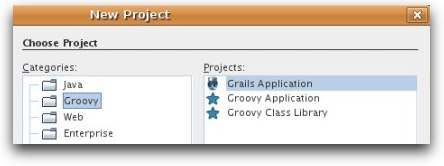
After Netbeans 6.0, the story gets better. Geertjan writes that a brand new Groovy plugin will be available in the post-6.0 builds that adds support for three types of Groovy projects: applications, class libraries and Grails webapps.
Dave Johnson in Java
04:05AM Nov 28, 2007
Comments [0]
Tags:
groovy
java
netbeans
Roller Strong #11
I've got a couple of Roller related items to blog about, so why not just call it Roller Strong #11.
First, Lars Trieloff responds to some of the questions I raised about JCR and Roller in my ApacheCon wrap-up post. I left a comment on his blog in response. Personally, I think a JCR back-end is a very interesting idea and I wish I had some more time to explore it.
Manchi Leung AKA Thinkboy posted the code for a new Textile plugin to the Roller dev list, using Textile-J. Thinkboy says "it supports almost all of the Textile syntax. very much the same as Confluence wiki. Now I can easily sync or copy working notes from Confluence wiki to my personal Roller blog." Nice. Note to self: I need to fix up some of our existing entry plugins -- I think some of them (e.g. Ekit) still haven't been updated for Roller 3.1.
Arun Gupta blogged recently about Backing up your Roller entries and explained how to use the Grabber example (now known as BlogBackup in Blogapps 2) from the Blogapps project to backup your Roller blog. Backing-up your entries, but backing up your uploads is not. Hopefully, blogs.sun,com will turn on Atom protocol someday and that'll will make it easy for a tool like Grabber backup both entries and uploads.
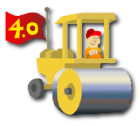
We're still waiting on Roller 4.0, but I sense our wait is soon over. Roller 4.0 RC10 was released one week ago with just a couple of bug fixes. And so far, no critical issues have been found. We've got only one +1 vote (thanks Anil!) so far so committers please test and vote.
And finally, I have to mention MarkMail because I've been using it throughout this blog post. MarkMail provides a slick interface and excellent facilities for mailing lists of all kinds. They're indexing all of the Apache mailing lists and providing statis and charts for each. Check the Roller page at MarkMail for example.
That's all I've got for this go-round. Keep on rollin'
Dave Johnson in Roller
04:04PM Nov 27, 2007
Comments [2]
Tags:
java
opensource
roller
Latest Links: Android, OpenSolaris and misc.
- Roy Fielding [ogb-discuss]: please dissolve the Desktop Community
"there is absolutely no reason for this organization to exist if all decisions are going to be made by Sun." - Ian Murdock [ogb-discuss]: re: please dissolve the Desktop Community
"You have to be joking? I don't even know where to begin.. This is like Robert's Rules of Order run amok" - Jim Grisanzio: Two Great Linus Quotes
"(1) one person or company shouldn't control the entire community, and (2) the real value of community development comes over the long term and results from many small contributions, not one big one." - Ed Burnette: Sun/Google Android âfightâ overblown
"Iâm here to tell you, itâs all bunk"..."However Google did make one big mistake with Android" - Slashdot: Google, Sun Headed for Showdown Over Android
Pure FUDtastic speculation based on Stefano's blog post - robilad: QOTD: Google's license for the Android SDK
"you may not extract the source code or create a derivative work of the SDK" - Javalobby: Is Google the New Microsoft?
Dalibor's comment: "Google will keep Android as proprietary as they can for as long as they can, while letting people believe something else" - David Heffelfinger: Eclipse Veteran Switches To NetBeans
"NetBeans has now surpassed Eclipse in usability. Count me in as a new convert." - Stuck in the middle : Weblog
Rickard Oberg is blogging at JRoller.com again - Alan Burlison's Blog: How to leave Facebook
"try mailing them, quoting the clear precedent they have set by closing my account" - Symphonious » Why Support OpenSocial?
"However, if OpenSocial gets support outside social networks it has the possibility of attracting developers who actually care about their users, not just their advertising profits and install count" - ZDNet: Firefox 3 Beta 1 has landed
"Improved performance with more than 300 memory leak fixes."
Dave Johnson in Links
12:00PM Nov 26, 2007
Comments [0]
Tags:
java
opensolaris
opensource
« Previous page | Main | Next page »